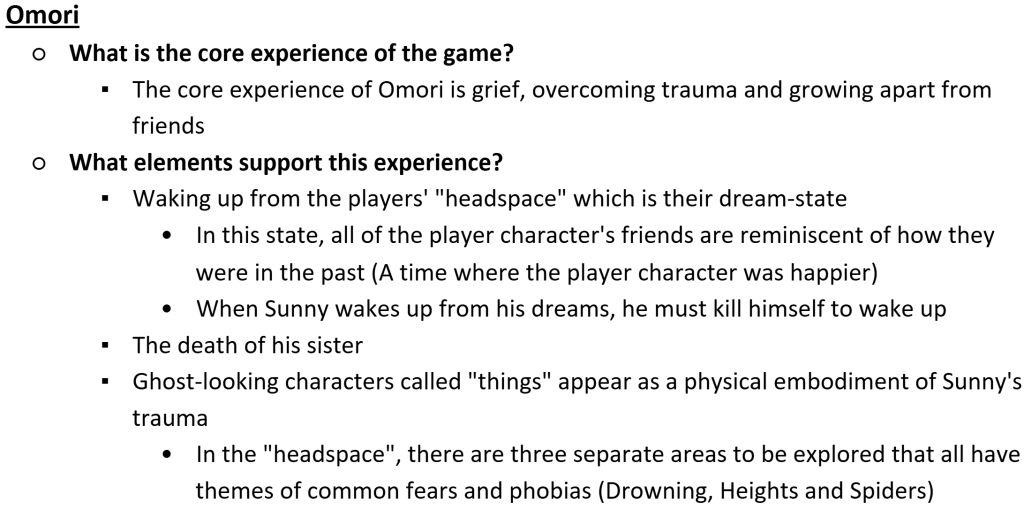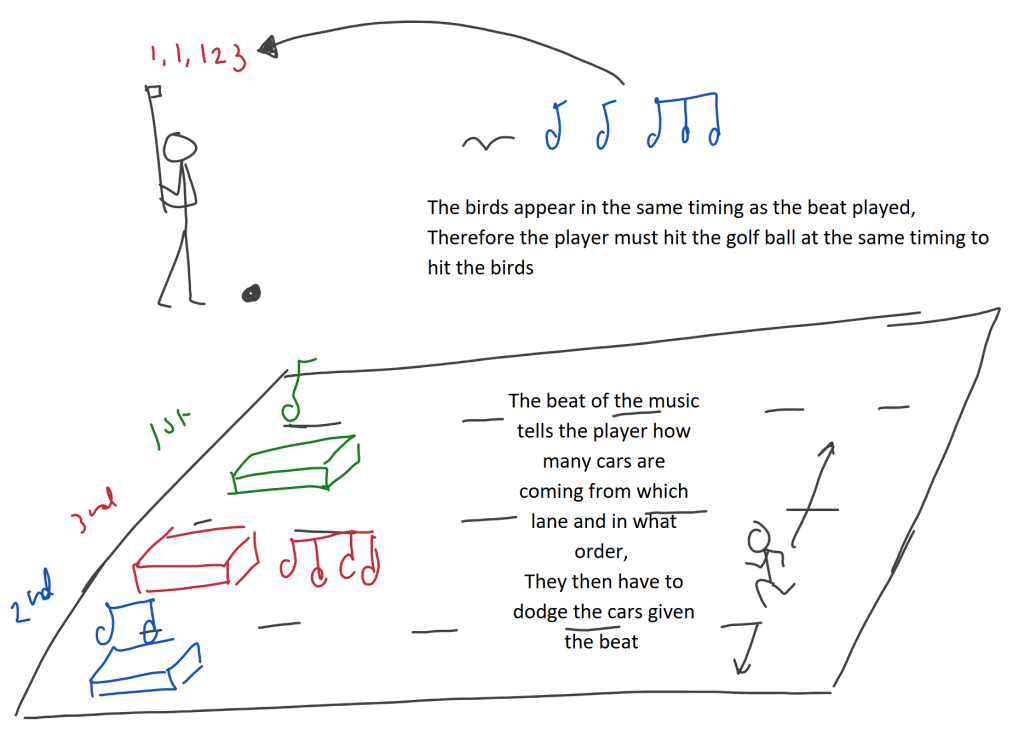During our first week in Year 2, we focused on looking into GDDs (Game Design Documents) in general; this initial research would serve as a good start point for us to begin thinking of initial ideas for potential games that we could create a GDD for. A GDD essentially serves as a blueprint for a video game; personally, I understood this to a be a document that if shown to an artist, programmer, level designer, audio engineer etc. they would immediately know what their role in the development of the game is and what they would need to do in order to create the finished game.
However, simply knowing what a GDD is isn’t enough to begin creating my own one; analyzing previous examples from successful games would allow me to find out what makes a good GDD and what I would need to implement in my own. Using this website I looked through and studied previous examples and what made them so useful to the developers who were able to make such a successful game.



After I had analysed previous examples of GDDs, I decided to outline certain aspects of these documents that I had seen that I believed to be the most important aspects. Along with these specific aspects, I described why these points were key to creating a successful GDD and essential points of focus for each one.

Task 1 – Idea Generation
We were tasked with creating a small GDD for a made-up game created through a template Vanissa gave us.
- 1 – An adjective that begins with the same letter as your first name – Energetic
- 2 – A genre that matches with your birth month – Puzzle Game
- 3 – A setting that matches your birth date – Amazon Jungle
Therefore, my prompt for a game was “Energetic Puzzle Game in the Amazon Jungle”. However, as this task was done in groups we decided to choose Paula’s prompt instead “Paranormal Tower Defence Game that takes place in a Venetian Masquerade Ball”. Our thought process began with, “What would be at a Venetian Masquerade Ball?”, so we began to research what it was – A formal event that took place in 16th-17th century Venice where attendees would wear masks and costumes and enjoy music, entertainment and dance.

Essential Experience
The “Essential experience” of a game looks to answer one key questions about it: “What emotions do you want your player to feel?”. This is what we looked at this Thursday as it is a critical component of game design and creating a GDD for a potential game.

In order to further understand what the essential experience of a video game entails, I decided to look deeply into a game I have played and enjoyed an attempt to discover what their essential experiences would be.

Task 2 – Creating a game that is personal to you
As a child, I often found myself day dreaming no matter the situation I was in; whether I was on the bus to school or reading the text on a cereal box or even just sat in class staring out of the window. I wanted to grasp this essential experience of using childlike imagination in order to make something creative out of something completely mundane. For example, I used to see Spiderman swinging from building to streetlamp etc. fighting enemies and doing tricks in the air; therefore I wanted the game to be set in the person of a child looking at every-day environments.


Review
These previous GDDs have outlined to me what parts of the game require more focus on a GDD:
- Game Concepts and Mechanics
- Story and Narrative
- Game Progression and Level Design
- Art and Aesthetic
- etc.
These bullet points will be focal points of my GDD in order to get my ideas and intent across efficiently and effectively.
